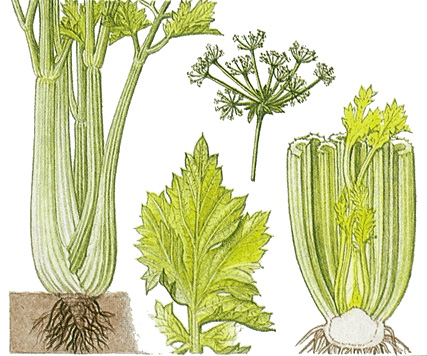Celery is a popular vegetable related to carrots and parsley. Celery is eaten raw in salads or with dips. It also is used in soups and as a garnish for other foods.
The celery plant consists of several long stalks with feathery leaves at their tops. The stalk is the part of the celery plant that is eaten. The stalks are actually petioles (leafstalks), which connect the leaves to a short stem. The stalks measure up to 14 inches (36 centimeters) long. The leaves grow from the tops of the stalks in clusters. Most varieties of celery have a light-green color.

Celery requires a long growing season and moist, fertile soil. It grows best in cool weather. Growers often plant celery seeds in greenhouses or outdoor beds. After the seedlings reach 5 to 6 inches (13 to 15 centimeters) high, they are transplanted to the field. The plant takes two years to complete its life cycle, but celery stalks are harvested during the first year. If left to grow a second year, the stalk lengthens and forms a bushy plant 3 to 4 feet (0.9 to 1.2 meters) tall. Seeds form on this bush. These seeds also are flavorful and are used in cooking.
Celery probably originated in areas near the Mediterranean Sea. The plant was first grown in ancient times as a medicine crop.
